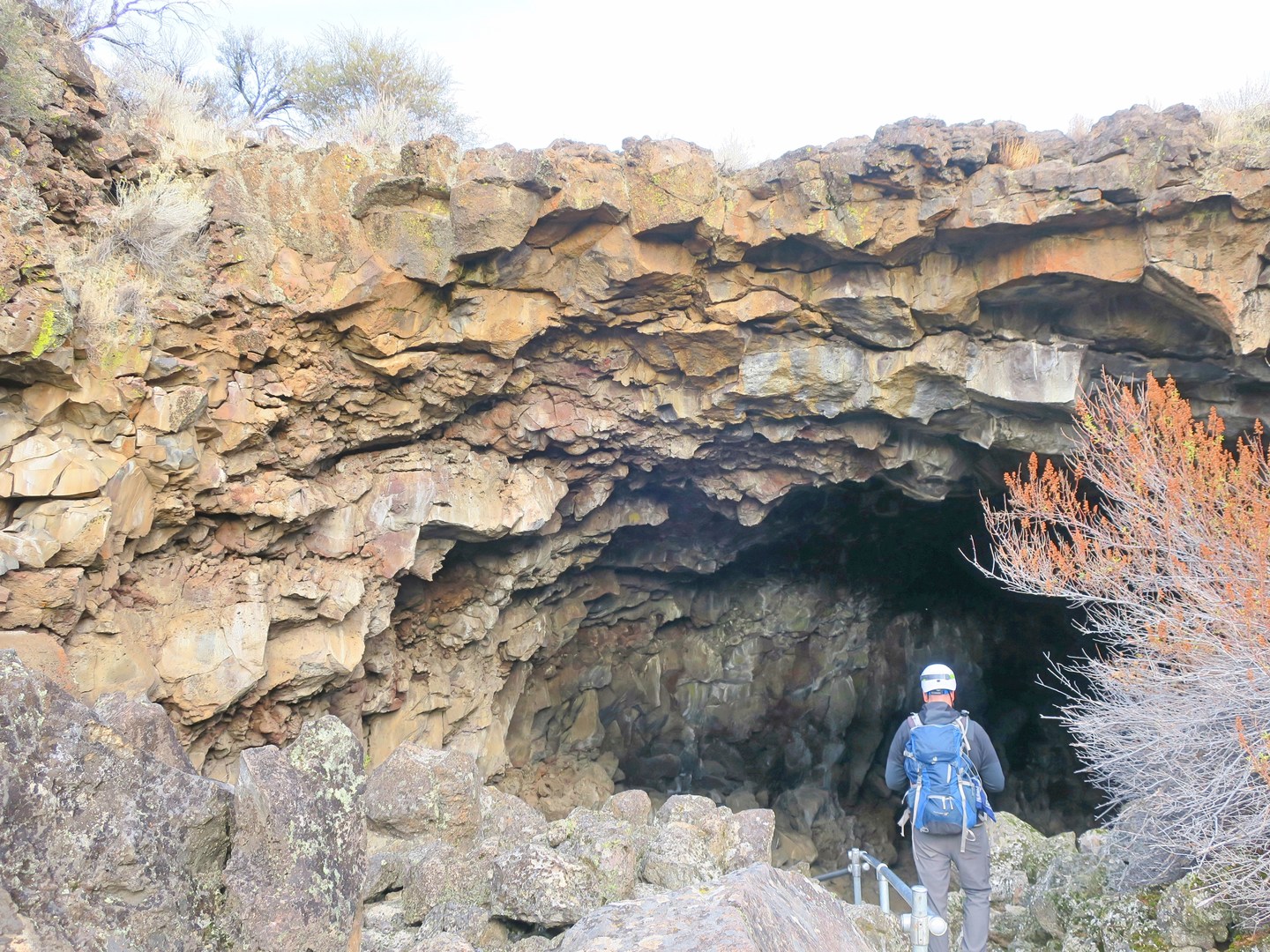The human history at Lava Beds National Monument goes back many thousands of years. Ancestors of the modern Modoc people lived in small bands in this area, catching fish, hunting game, harvesting vegetation, and creating cryptic imagery in the rock. At Symbol Bridge at Big Painted Cave, modern visitors can see remnants of this artwork on the walls of the caves.
This route connects three easily accessible caves as it meanders across the wide, open landscape of Lava Beds National Monument. Start from the Skull Cave parking area and read the interpretive sign before the cave entrance. The sign describes how climate change and human visitation have both taken a toll on the depth and clarity of perennial ice in the cave. If you visit the monument in the middle of summer, however, don't expect to find a subterranean ice rink. But Skull Cave is interesting even without an epic ice sheet. Several metal stairways lead you into the dark depths of Skull Cave—be sure to bring a flashlight or lantern. At the bottom of the stairs, metal bars stand between you and the historic ice structure. Depending on the conditions in the cave, you may find ice or water there.
Walk back along the road to find the trail that leads to Symbol Bridge and Big Painted Cave. This trail leads 0.75 miles to Symbol Bridge, where you will see several geometric shapes drawn on the rock walls with charcoal. On your way back to where you started, take a short detour to Big Painted Cave. Few petroglyphs remain here due to vandalism and weathering. Take a moment and pause to reflect on the people who lived here many generations ago. Do your part to help preserve this area for future generations to come and enjoy.
If you're staying at the Indian Well Campground, consider starting your adventure from there. Take the Bunchgrass Trail to the Missing Link trail, which connects to Skull Cave Road. This adds only a couple extra miles of walking and provides an opportunity to look for deer, jackrabbits and other desert creatures.

























Comments
Sign In and share them.